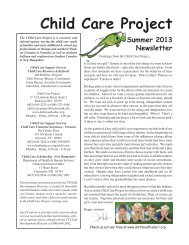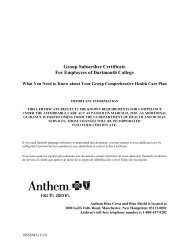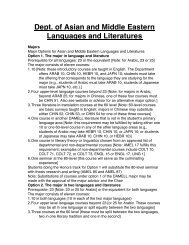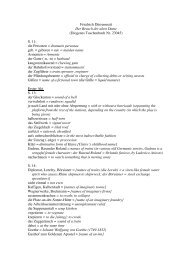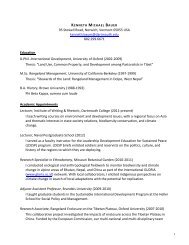Chapter 10: Generating Functions
Chapter 10: Generating Functions
Chapter 10: Generating Functions
You also want an ePaper? Increase the reach of your titles
YUMPU automatically turns print PDFs into web optimized ePapers that Google loves.
390 CHAPTER <strong>10</strong>. GENERATING FUNCTIONS<br />
generation are the letters you sell. The second generation consists of the letters sold<br />
by members of the first generation, and so forth.<br />
Let us assume that the probabilities that each individual sells letters to 0, 1,<br />
or 2 others are p 0 , p 1 , and p 2 , respectively. Let Z 1 , Z 2 , ..., Z 12 be the number of<br />
letters in the first 12 generations of this branching process. Then your expected<br />
winnings are<br />
50(E(Z 1 )+E(Z 12 ))=50m +50m 12 ,<br />
where m = p 1 +2p 2 is the expected number of letters you sold. Thus to be favorable<br />
we just have<br />
50m +50m 12 > <strong>10</strong>0 ,<br />
or<br />
m + m 12 > 2 .<br />
But this will be true if and only if m>1. We have seen that this will occur in<br />
the quadratic case if and only if p 2 >p 0 . Let us assume for example that p 0 = .2,<br />
p 1 = .5, and p 2 = .3. Then m =1.1 and the chain would be a favorable game. Your<br />
expected profit would be<br />
50(1.1+1.1 12 ) − <strong>10</strong>0 ≈ 112 .<br />
The probability that you receive at least one payment from the 12th generation is<br />
1−d 12 . We find from our program Branch that d 12 = .599. Thus, 1−d 12 = .401 is<br />
the probability that you receive some bonus. The maximum that you could receive<br />
from the chain would be 50(2 + 2 12 ) = 204,900 if everyone were to successfully sell<br />
two letters. Of course you can not always expect to be so lucky. (What is the<br />
probability of this happening?)<br />
To simulate this game, we need only simulate a branching process for 12 generations.<br />
Using a slightly modified version of our program BranchingSimulation<br />
we carried out twenty such simulations, giving the results shown in Table <strong>10</strong>.4.<br />
Note that we were quite lucky on a few runs, but we came out ahead only a<br />
little less than half the time. The process died out by the twelfth generation in 12<br />
out of the 20 experiments, in good agreement with the probability d 12 = .599 that<br />
we calculated using the program Branch.<br />
Let us modify the assumptions about our chain letter to let the buyer sell the<br />
letter to as many people as she can instead of to a maximum of two. We shall<br />
assume, in fact, that a person has a large number N of acquaintances and a small<br />
probability p of persuading any one of them to buy the letter. Then the distribution<br />
for the number of letters that she sells will be a binomial distribution with mean<br />
m = Np. Since N is large and p is small, we can assume that the probability p j<br />
that an individual sells the letter to j people is given by the Poisson distribution<br />
p j = e−m m j<br />
j!<br />
.




